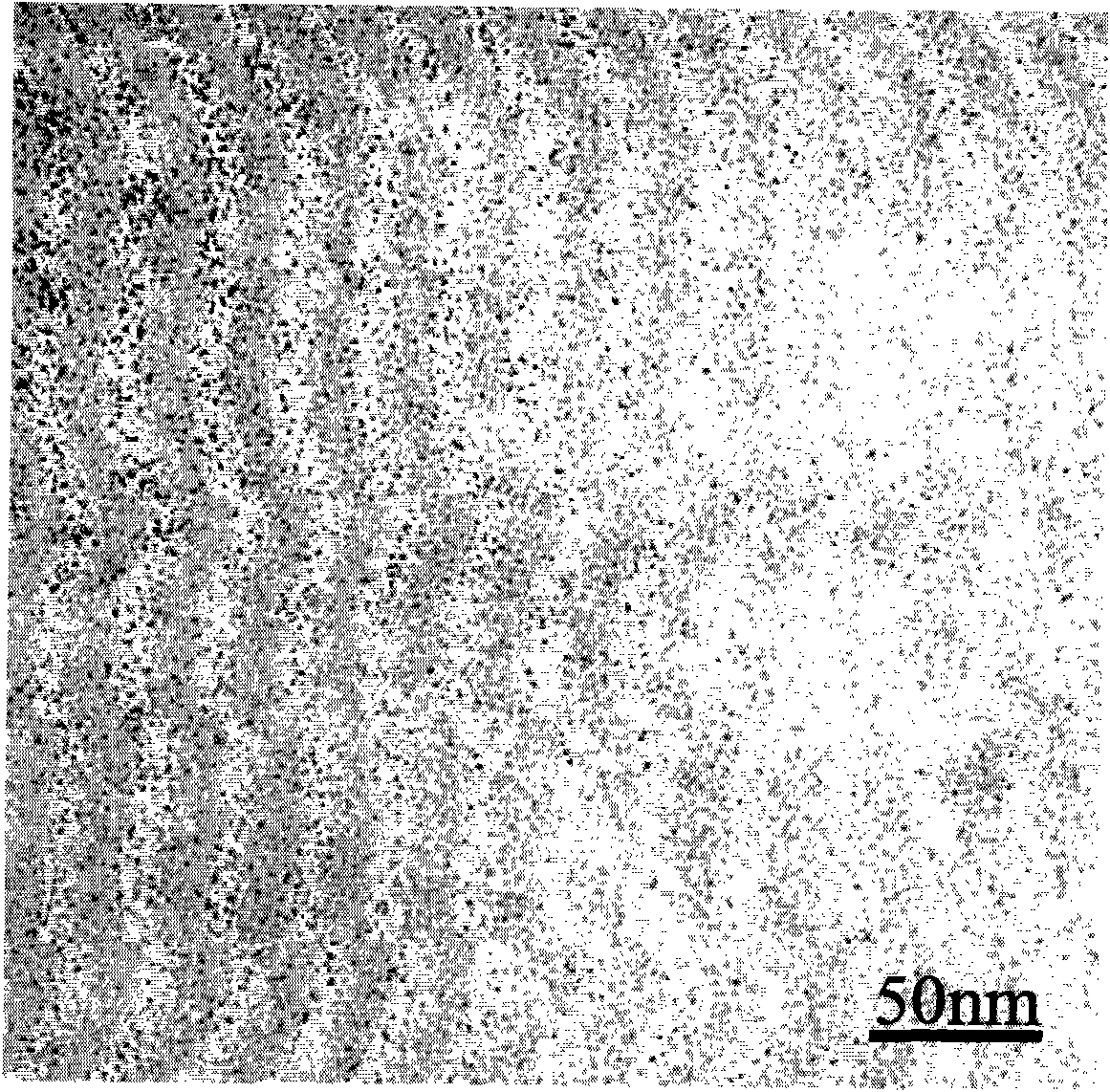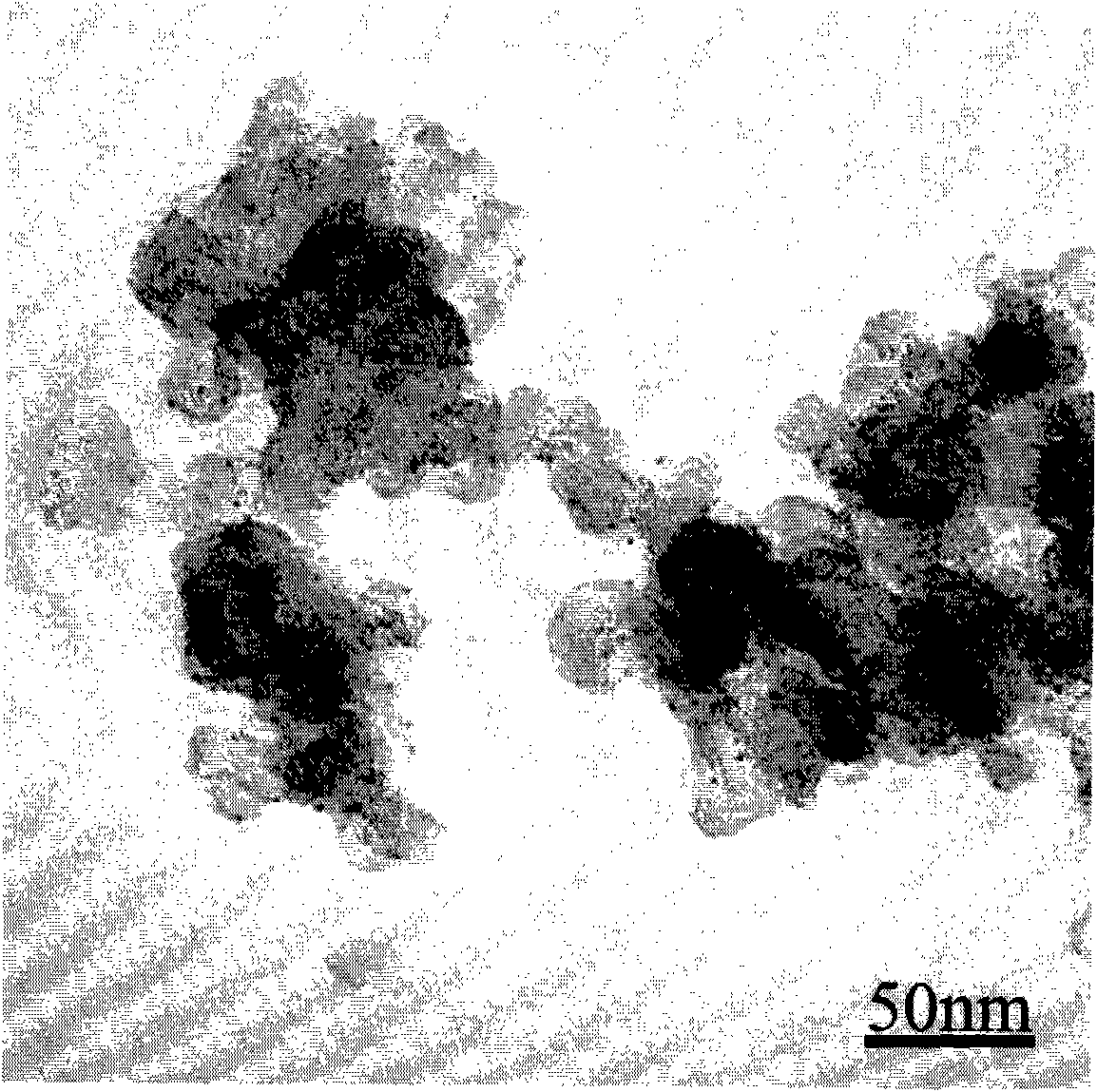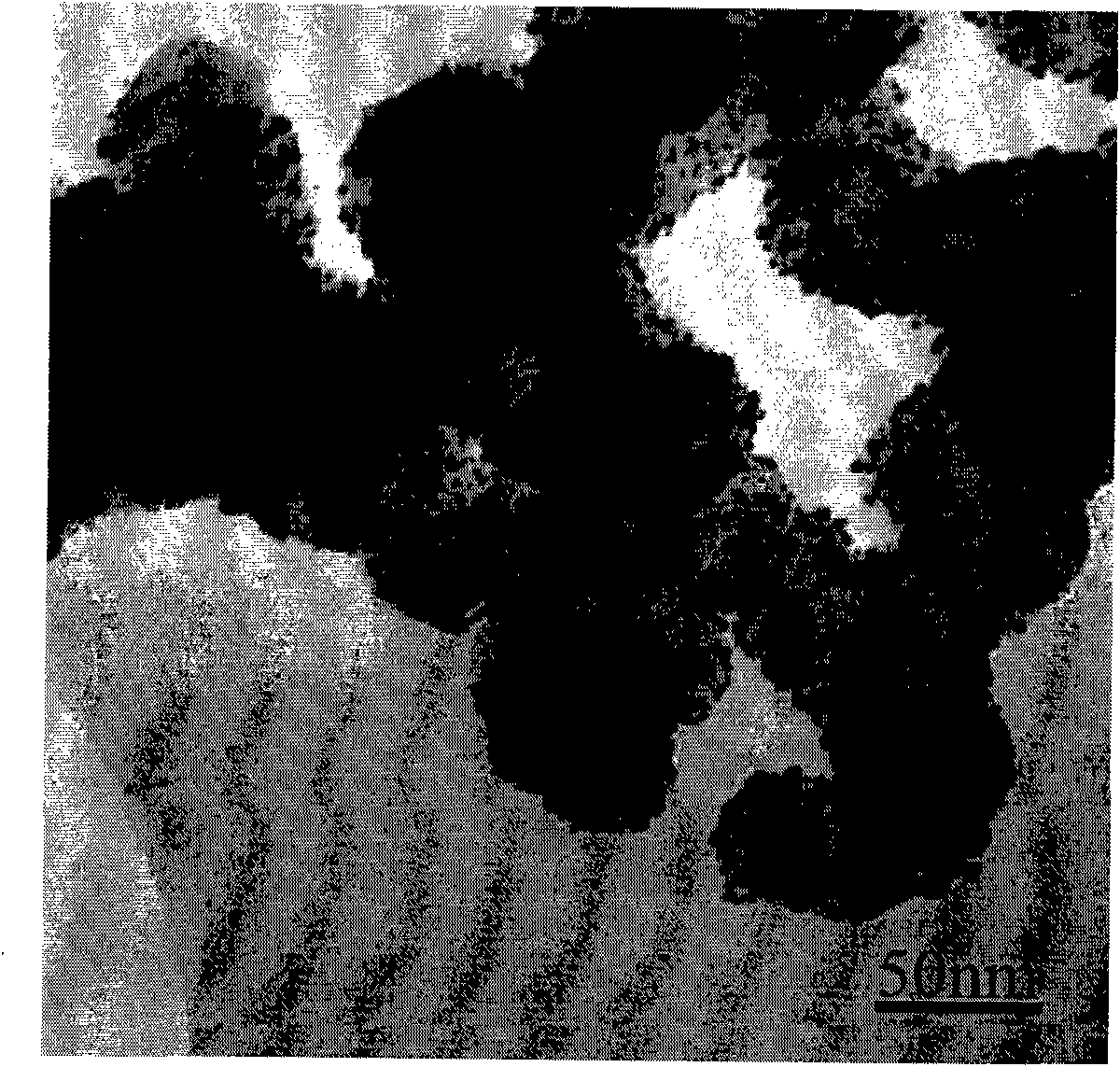Supported transition metal or transition metal alloy nanocluster catalyst and preparation method and application thereof
A transition metal and alloy nanotechnology, applied in metal/metal oxide/metal hydroxide catalysts, catalyst activation/preparation, physical/chemical process catalysts, etc., can solve problems such as unfavorable environmental protection and noble metal nanocluster aggregation. , to achieve the effect of easy control of structure, high availability and high dispersion
- Summary
- Abstract
- Description
- Claims
- Application Information
AI Technical Summary
Problems solved by technology
Method used
Image
Examples
Embodiment 1
[0030] Embodiment 1: prepare the Pt / C supported metal nanocluster catalyst containing 5wt%Pt
[0031] Dissolve 1g of chloroplatinic acid hexahydrate in 50ml of ethylene glycol, add it to 50ml of sodium hydroxide in ethylene glycol (0.26mol / L) with stirring, continue stirring for 30min at room temperature, and dissolve the resulting reactant Under the protection of nitrogen, reflux at 433K for 3 hours to prepare "unprotected" platinum metal nanocluster colloids, and cool to room temperature for later use, in which the concentration of metal Pt is 3.75g / L.
[0032] Transmission electron microscopy analysis showed that the average particle size of the Pt metal nanoclusters was 2nm, and the particle size distribution was 1-3nm. Electron micrographs of Pt metal nanoclusters as figure 1 shown.
[0033] Get Ketjen EC-300J type carbon black (specific surface area, 950m 2 / g) 2.0g dispersed in 30ml ethanol, ultrasonically dispersed.
[0034] Take 28.1ml of the above-mentioned Pt me...
Embodiment 2
[0037] Embodiment 2: prepare the Pt / C supported metal nanocluster catalyst containing 50wt%Pt
[0038] Dissolve 1.3282g of chloroplatinic acid hexahydrate in 10ml of ethylene glycol, add it into 10ml of sodium hydroxide in ethylene glycol solution (1.69mol / L) with stirring, continue to stir at room temperature for 30min, and react the obtained The material was refluxed at 433K for 3 hours under the protection of nitrogen to prepare the "non-protected" platinum metal nanocluster colloid, which was cooled to room temperature for later use, and the concentration of metal Pt was 25.0 g / L.
[0039] Get Vulcan XC-72R type carbon black (specific surface area, 256m 2 / g) 0.4g was dispersed in 55ml of water and ultrasonically dispersed.
[0040] Take 16.0ml of the prepared Pt metal nanocluster colloid, add it dropwise to the above water dispersed with 0.4g of carbon carrier (Vulcan XC-72R) under rapid stirring, continue to stir for 12h, the precipitate is filtered under reduced pressu...
Embodiment 3
[0043] Embodiment 3: preparation contains the Pt / C supported metal nanocluster catalyst containing 40wt%Pt
[0044] By the same method as in Example 2, adjust the mass ratio of Pt metal nanoclusters and carbon support (Vulcan XC-72R) in the Pt metal nanocluster colloid to prepare a Pt / C supported metal nanocluster catalyst containing 40 wt% platinum.
[0045] The electron micrographs of the prepared Pt / C supported metal nanocluster catalyst are as follows: Figure 4 As shown, transmission electron microscope analysis shows that the average particle size of Pt metal nanoclusters in the prepared Pt / C supported metal nanocluster catalyst is 2.5 nm, and the particle size distribution is 1-4 nm. The above characterization results show that the metal Pt nanoclusters are well dispersed on the carbon support, and there is no obvious aggregation between the Pt nanoclusters on the support.
[0046] The catalyst exhibits excellent catalytic performance in the reaction of 2,3,5-trimethyl...
PUM
| Property | Measurement | Unit |
|---|---|---|
| The average particle size | aaaaa | aaaaa |
| Particle size | aaaaa | aaaaa |
| Particle size distribution | aaaaa | aaaaa |
Abstract
Description
Claims
Application Information
 Login to View More
Login to View More - R&D
- Intellectual Property
- Life Sciences
- Materials
- Tech Scout
- Unparalleled Data Quality
- Higher Quality Content
- 60% Fewer Hallucinations
Browse by: Latest US Patents, China's latest patents, Technical Efficacy Thesaurus, Application Domain, Technology Topic, Popular Technical Reports.
© 2025 PatSnap. All rights reserved.Legal|Privacy policy|Modern Slavery Act Transparency Statement|Sitemap|About US| Contact US: help@patsnap.com



